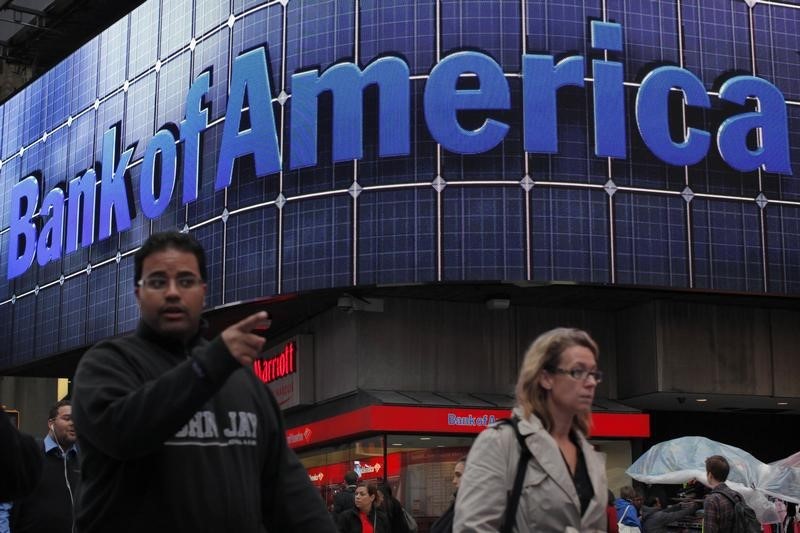Quiver Quantitative - Bank of America (NYSE:BAC) posted impressive third-quarter results, its best in over a decade, driven largely by robust performances in trading and net interest income (NII). Amidst the Federal Reserve's strategy to counter inflation with elevated interest rates, the bank's stock-trading revenue surged by 10% to a notable $1.7 billion. This trading boon contributed to the bank’s net income, which witnessed a 10% growth, reaching $7.8 billion, or 90 cents a share—surpassing the 81-cent estimate by analysts.
NII, a crucial revenue stream for the bank, escalated by 4.5% to $14.4 billion, outstripping the anticipated 2.5% increase. CEO Brian Moynihan credited the growth to the acquisition of new clients across all business segments, notwithstanding the challenges of a decelerating economy. Recent results from other banking giants such as JPMorgan Chase & Co. (NYSE:JPM), Wells Fargo (NYSE:WFC), and Citigroup (NYSE:C) also exceeded NII forecasts, although Bank of America remained steady with its fourth quarter NII projection at approximately $14 billion.
The bank's shares, based in Charlotte, North Carolina, elevated by 1.9% to $27.49 in New York trading. However, it's noteworthy that the stock has witnessed a 17% dip this year, though this is less severe than the 23% slump experienced by the KBW Bank Index. Expenses, particularly non-interest expenses, observed a 3.5% increase, reaching $15.8 billion. This uptick, propelled in part by persistent inflation, was marginally higher than the 3.3% analysts had predicted.
On Wall Street, Bank of America's investment banking division surpassed expectations across the board, registering $1.25 billion in total fees, inclusive of self-led ventures. Revenues from lending and advising on mergers and acquisitions also saw positive movement. However, lending balances, a crucial metric for investors, climbed to $1.049 trillion by the third quarter's end, marginally below the projected $1.053 trillion. This discrepancy highlights the lending challenges faced during the pandemic and the subsequent impact of rising interest rates on loan affordability.
This article was originally published on Quiver Quantitative
